Contents
In this blog post, you will learn different types of houses and their unique styles. Houses come in various designs, shapes, and structures, each serving different needs and environments. Understanding these home styles will help you improve your English vocabulary and describe buildings more accurately. Whether for conversation, writing, or travel, knowing house types is useful in daily life.
To expand your vocabulary on different topics, visit our vocabulary category for more helpful lessons.
Types of Houses
Structure/Design Style

Bungalow
A bungalow is a single-story house that originated in British India. These types of homes are typically small, featuring wide verandas and low-pitched roofs, making them ideal for small families or retirees who prefer a simple, compact living space.

Cottage
Cottages are cozy, small homes often found in rural areas. Historically used by farmers, their compact size and charming stone or wood exteriors make them popular in countryside settings. These homes are now seen as ideal vacation homes or retreats.

Townhouse
A townhouse is a multi-story house, typically built in rows and sharing side walls with neighboring homes. These types of dwellings maximize space in urban areas, offering families affordable living within city centers while providing vertical separation for privacy.

Penthouse
A penthouse is a luxurious apartment located on the top floor of high-rise buildings. Known for their spaciousness and panoramic city views, these residences appeal to high-income individuals seeking privacy, style, and luxury in urban settings.

Castle
Castles are large, fortified residences originally built for defense in medieval Europe. These grand structures feature stone walls, towers, and moats. Today, castles serve as tourist attractions or are privately owned, representing power and historical significance.

Manor
A manor is a grand country estate typically found in Europe. Historically, these properties were owned by nobility and featured large gardens, multiple rooms, and luxurious designs. Manors symbolize wealth and prestige, often associated with historical significance.
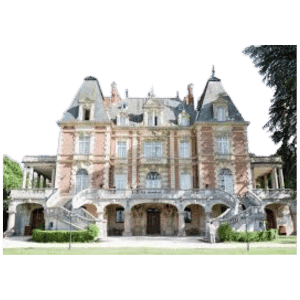
Chateau
A chateau is a French-style mansion, typically found in rural areas, surrounded by vineyards or large gardens. These residences are known for their grand, symmetrical architecture and have become synonymous with luxury and history, often serving as hotels or tourist sites.

Palace
Palaces are the grandest types of residences built for royalty or heads of state. Featuring lavish design, large halls, and ornate decorations, palaces serve both ceremonial and residential purposes. They are often government buildings or museums today.

Fort
Forts are large, fortified structures built for military defense. Often located in strategic areas, forts have thick walls and watchtowers. Historically significant, many forts are now preserved as museums or historical sites, showcasing their defensive architectural style.

Treehouse
A treehouse is a small, elevated home built into the branches of a tree. These structures are typically used for recreational purposes but are occasionally used as permanent homes in eco-friendly or off-grid living setups.

Lighthouse
Lighthouses are tall structures built along coastlines to guide ships safely. These cylindrical towers have a light at the top and are often historical landmarks today. Some have been converted into homes or tourist accommodations, offering unique living experiences.

Log Cabin
A log cabin is a small, rustic home made of logs, historically built by settlers in North America. These homes are synonymous with outdoor living and self-sufficiency, commonly used as vacation homes in rural or forested areas.

Row House
Row houses are a series of uniform homes built in a row, sharing side walls with adjacent units. These types of houses are popular in densely populated cities, offering an efficient and affordable housing option for families and individuals.

Tiny House
A tiny house is a small, compact home, typically less than 400 square feet, designed to minimize living space. These homes have become popular for their affordability and eco-friendliness, often built on wheels for mobility.

Cape Cod House
Cape Cod houses originated in New England during the 17th century. These small, single-story homes are characterized by steep roofs and central chimneys, providing a cozy and efficient living space in suburban areas.
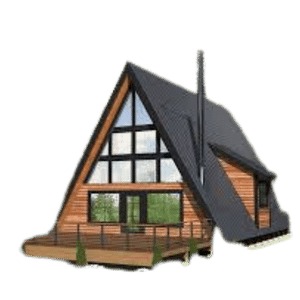
A-Frame House
An A-frame house is known for its steep, triangular roof, resembling the shape of the letter “A.” These homes are ideal for areas with heavy snowfall and are often used as vacation homes in mountainous regions.

Split-Level House
Split-level houses feature staggered floors, with the main level between two half-stories. These homes were popular in the mid-20th century and are ideal for families, offering separate living spaces without taking up more horizontal space.

Tudor House
Tudor houses feature steep gabled roofs and decorative half-timbering, reflecting their English heritage. These homes are common in suburban areas and evoke a historical, storybook charm, making them popular among traditional homeowners.

Modern House
Modern houses emphasize minimalism, open spaces, and clean lines. These homes are designed with function and simplicity in mind, often incorporating large windows and flat roofs to create a sleek, contemporary look.

Colonial House
A colonial house is a symmetrical, two-story home with a central door and evenly spaced windows. Originating in the American colonial period, these homes are large and spacious, often used for family living in suburban areas.

Thatched Roof Cottage
Thatched roof cottages are small homes with roofs made from straw or reeds. These homes are often found in rural Europe and are known for their charming, old-world appearance, often used as vacation homes or tourist attractions.
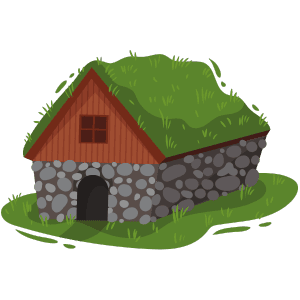
House with Green Roof
A house with a green roof features vegetation planted on its rooftop, providing insulation and absorbing rainwater. These eco-friendly homes are growing in popularity due to their sustainability and unique aesthetic appeal.

House with Living Roof
Similar to green roofs, a house with a living roof has a rooftop garden, improving energy efficiency and reducing water runoff. These homes offer a natural and sustainable living solution, commonly found in urban and eco-friendly communities.

Hobbit House
A hobbit house is a small, earth-sheltered home built into the ground, inspired by J.R.R. Tolkien’s fictional creations. These homes are environmentally friendly, using natural materials and energy-efficient designs for a sustainable lifestyle.

Craftsman House
Craftsman houses are known for their hand-crafted woodwork, wide porches, and low-pitched roofs. Originating in the early 1900s, these homes emphasize detail and craftsmanship, making them popular in suburban areas for their cozy charm.

Mediterranean House
A Mediterranean house features stucco exteriors, red-tiled roofs, and arched windows, inspired by the architecture of Southern Europe. These homes are ideal for warm climates, offering a relaxed, coastal living experience.

Georgian House
Georgian houses are symmetrical, elegant homes with brick exteriors and detailed entryways. These homes, originating in the 18th century, are known for their stately design and are often seen in affluent neighborhoods.

Contemporary House
Contemporary houses reflect current architectural trends, emphasizing energy efficiency, open spaces, and integration with nature. These homes are characterized by innovation and often feature eco-friendly designs with modern materials.

Victorian Gingerbread House
Victorian gingerbread houses are highly ornate, colorful homes built during the Victorian era. These homes feature intricate wooden trim and bold colors, making them standout houses in historic neighborhoods.
Types of Homes by Design Style with Picture

Types of Houses by Number of Units

Duplex
A duplex is a house divided into two separate living units, either side-by-side or one above the other. These types of houses are popular for multi-family living, allowing two households to live independently while sharing the same structure. Duplexes are often chosen for rental purposes, providing owners with two streams of income while maintaining a single property.

Triplex
A triplex consists of three separate units within one building, typically stacked vertically. These multi-unit homes are commonly found in urban areas, offering housing solutions for multiple families or rental purposes. Each unit in a triplex functions independently, often with separate entrances and utilities, providing privacy for all residents.

Quadruplex
A quadruplex is a residential building divided into four units, often seen in both urban and suburban settings. These homes offer an affordable housing option for renters or multi-family arrangements, with each unit featuring independent utilities and entrances. Quadruplexes are favored for their ability to provide housing for more families within a compact footprint.
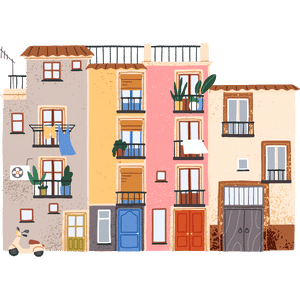
Apartment
An apartment is a single living unit within a larger building. These dwellings are common in urban areas, where shared amenities such as elevators, parking, and recreational facilities are often provided. Apartments vary in size, from small studios to multi-bedroom units, making them a versatile housing option for city dwellers who prioritize location and convenience.

Co-op (Cooperative)
A co-op is a type of housing where residents collectively own the entire building rather than individual units. These residences foster a sense of community, as decisions about property management and maintenance are made collectively by the residents. Co-ops often have a board that screens potential residents, ensuring a cohesive living environment.

Prefabricated House (Prefab)
A prefabricated house, or prefab, is constructed off-site and then transported to its permanent location. These modular homes are popular for their affordability and quick assembly. Prefab houses offer modern, sustainable housing solutions for those looking for a cost-effective and environmentally friendly home. Their modular nature allows for customization and easy expansion.
Types of Homes by Number of Units with Pictures

Construction Material Types of Houses

Adobe House
An adobe house is made from natural materials, primarily clay and straw, formed into bricks. These homes are common in hot, arid climates and are known for their excellent insulation and durability, offering a traditional, eco-friendly design. Adobe homes are often seen in regions like the American Southwest, where their thermal properties help regulate indoor temperatures.

Lustron House
A Lustron house is a prefabricated home made of steel panels, popular in the U.S. post-World War II era. These types of homes are durable and low-maintenance, offering a unique, modernist design while being easy to assemble and maintain. Lustron houses are noted for their practicality and innovative use of materials during a time of housing shortages.

Log Cabin
A log cabin is constructed from logs and is historically associated with settlers in North America. These rustic, durable dwellings are popular for vacation homes in rural or forested areas, offering a cozy and nature-focused living experience. Log cabins are well-known for their aesthetic connection to nature and outdoor living.

Shipping Container House
Shipping container houses are built from recycled shipping containers, offering a modular and affordable housing option. These structures are gaining popularity for their sustainability, modern design, and ability to be easily transported or expanded. Shipping container homes are favored by those looking for flexible, eco-conscious living solutions.

Earthship
An earthship is a sustainable house made from natural and recycled materials, including tires and earth-filled walls. These homes are designed to be self-sufficient, with solar energy, water harvesting systems, and eco-friendly construction methods. Earthships are recognized for their ability to minimize environmental impact while providing off-grid living.

Geodesic Dome
A geodesic dome house is a spherical structure made from triangular elements, offering strength and energy efficiency. These residences are unique for their futuristic design and are often used for eco-friendly or disaster-resistant housing. Geodesic domes are favored for their ability to withstand harsh weather conditions and provide efficient space usage.

Oast House
An oast house is a historic structure originally built to dry hops for brewing. These homes, common in the UK, have been repurposed into residential spaces, known for their distinctive round towers and conical roofs. Oast houses are an example of how historical buildings can be transformed into modern homes while retaining their original charm.
Houses Type by Construction Material with Pictures

Purpose/Function

Treehouse
A treehouse is a small structure built in the branches of a tree, typically used for recreational purposes or as a child’s play area. These unique dwellings can also be designed for adults seeking an eco-friendly or off-grid lifestyle. Treehouses are often built in remote forested areas, offering a natural and serene living environment.

Lighthouse
Lighthouses are tall, cylindrical structures built along coastlines to guide ships safely. These iconic buildings are now often repurposed into homes or tourist accommodations, offering a one-of-a-kind living experience with breathtaking ocean views. Many people are drawn to lighthouse homes for their historical significance and unique location.

Houseboat
A houseboat is a floating home designed for living on water. These water-based residences are common in areas with canals or rivers, providing a relaxed and mobile lifestyle for those who enjoy being close to nature. Houseboats offer a unique way to live, combining the comforts of home with the tranquility of water living.
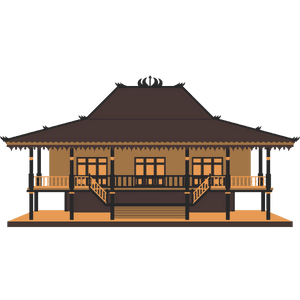
Longhouse
A longhouse is a large, communal structure traditionally built by Native American and Viking cultures. These types of communal houses were designed to accommodate multiple families, with a central hearth for warmth and cooking. Longhouses emphasize community living and were integral to various indigenous cultures for generations.

Tentsile (Portable Treehouse)
A tentsile is a modern portable treehouse, suspended between trees using straps. These lightweight and mobile structures are perfect for adventurous travelers who want to camp above ground in nature. Tentsiles offer a unique camping experience, blending the comfort of a treehouse with the mobility of a tent.
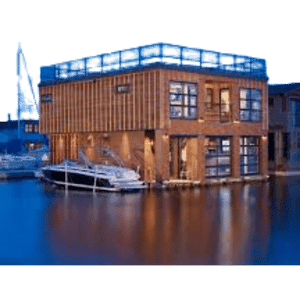
Floating Home
A floating home is a stationary house built on water, differing from a houseboat in that it cannot move on its own. These water-bound homes are popular in cities with canals or rivers, such as Amsterdam or Seattle, offering residents a serene and peaceful lifestyle close to the water. Floating homes are known for their tranquil living environments and close connection to nature.

Tiny House
A tiny house is a compact living space, typically under 400 square feet. These minimalist residences are designed for sustainable living, often being mobile or off-grid. Tiny houses have grown in popularity due to their affordability and small environmental footprint, making them ideal for people seeking a simpler, eco-conscious lifestyle.
Houses Types by Purpose with Pictures

Cultural or Historical Significance Types of Houses

Castle
Castles are fortified residences built in medieval Europe for defense and nobility. These types of houses are iconic for their stone walls, towers, and moats.. Many castles have been preserved as historical landmarks or used as tourist attractions, offering a glimpse into the architecture and lifestyle of medieval times.

Palace
Palaces are grand residences designed for royalty, featuring opulent architecture, large halls, and expansive gardens. These types of homes symbolize power and wealth, often serving as museums or government buildings today. Palaces are renowned for their intricate designs and historical significance.

Fort
A fort is a military structure built for defense, typically characterized by high walls and strategic watchtowers. These types of houses played a crucial role in historical warfare, often located in key strategic areas. Many forts are now preserved as heritage sites or military museums, showcasing their historical importance.

Wigwam
A wigwam is a domed shelter made from wooden frames and covered with bark or hides, used by Native American tribes. These culturally significant dwellings offer insight into traditional, nomadic lifestyles. Wigwams were primarily used by tribes in the Northeastern and Great Lakes regions of North America.

Teepee (Tipi)
A teepee is a conical tent traditionally used by Native American Plains tribes. Made from animal hides and wooden poles, these portable structures were ideal for nomadic lifestyles, providing warmth and shelter in all weather conditions. Today, teepees remain symbols of Native American culture and heritage.

Yurt
A yurt is a circular tent with a wooden frame, covered in felt or skins, historically used by nomads in Central Asia. These homes are valued for their portability and efficiency in harsh climates. Modern yurts are still used today, both in traditional settings and as eco-friendly tourist accommodations.

Ger (Mongolian Yurt)
A ger, similar to a yurt, is a traditional Mongolian dwelling with a circular design, constructed from a wooden frame and felt cover. These types of houses are designed to be portable and are still widely used by nomadic families in Mongolia. Gers have remained a vital part of Mongolian culture for centuries.
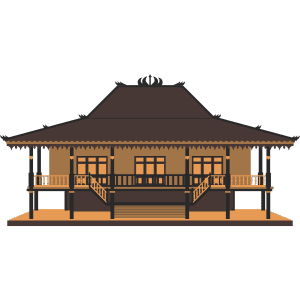
Longhouse
A longhouse is a large, communal structure used by various cultures, including Native Americans and Vikings. These communal homes were built to accommodate multiple families under one roof, often with a central fire for cooking and warmth. Longhouses reflect the importance of community in these cultures.

Pueblo House
A pueblo house is a terraced, multi-story building made from adobe or stone, traditionally built by Indigenous peoples of the Southwestern United States. These homes are known for their unique, flat-roofed design and deep cultural importance. Pueblo houses offer a glimpse into the architectural heritage of the region.

Adobe House
An adobe house is made from natural materials, including clay and straw, and is traditionally found in arid regions like the American Southwest. These energy-efficient homes are a testament to the blend of Indigenous and Spanish colonial architecture, designed to withstand the hot climate.

Chateau
A chateau is a grand French country mansion, often surrounded by vineyards or gardens. These residences are known for their historical significance, particularly during the Renaissance, and are now often used as boutique hotels or tourist destinations. Chateaus symbolize luxury and cultural heritage.
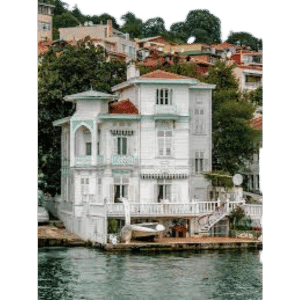
Yali House
A yali house is an Ottoman-era mansion located along the Bosphorus Strait in Turkey. These grand homes were built for the elite, showcasing ornate architecture and stunning views of the water. Many yali houses are preserved as historical sites, representing the rich cultural history of the region.

Manor
A manor is a large estate typically owned by nobility or the upper class in medieval Europe. These estates often include expansive grounds, multiple rooms, and a rich history, symbolizing wealth and power. Manors were centers of agricultural activity and social life during the medieval period.

Quonset Hut
A quonset hut is a lightweight, prefabricated structure made of corrugated steel, originally used by the military during World War II. These homes are now repurposed for civilian use, offering affordable and durable housing options. Quonset huts are valued for their simple construction and utility.

Colonial Saltbox House
A colonial saltbox house is a two-story wooden home with a long, sloping roof, typical of early American colonial architecture. These types of homes are known for their simplicity and practicality, commonly found in New England. The saltbox house remains an enduring symbol of American colonial design.
Types of Houses by Culture with Pictures

Location/Geographic Influence

Igloo
An igloo is a dome-shaped house made from blocks of snow, traditionally built by the Inuit people in the Arctic. These types of houses are designed to insulate against extreme cold, making them highly efficient for survival in harsh environments. Igloos are excellent examples of how indigenous architecture adapts to natural surroundings.

Floating Home
A floating home is a house built on a platform that floats on water, typically anchored to a dock. These residences are popular in cities with extensive waterways like Amsterdam and Seattle, offering a unique lifestyle close to nature. Floating homes provide a distinct combination of urban living and aquatic tranquility.

Underground House
An underground house is built partially or fully below the earth’s surface, using the natural terrain to regulate temperature. These types of homes are popular in extreme climates, offering insulation from both heat and cold, making them highly energy efficient and environmentally friendly.

House on Stilts
A house on stilts is elevated above the ground or water, commonly found in flood-prone areas or coastal regions. These homes are practical for locations near bodies of water, providing protection against floods and high tides. Stilt houses are often seen in tropical or riverine regions, where elevated structures are essential for safety.

Silo House
A silo house is a cylindrical structure originally used for storing grain, repurposed into a living space. These types of dwellings are often found in rural areas, valued for their unique shape and rustic aesthetic. Silo homes showcase the creative reuse of agricultural buildings.

Roundhouse
A roundhouse is a circular home traditionally built by various cultures, including the Celts. These homes offer excellent structural integrity and are designed to withstand harsh weather, making them ideal for exposed landscapes. The roundhouse design maximizes wind resistance and uses natural materials for construction.
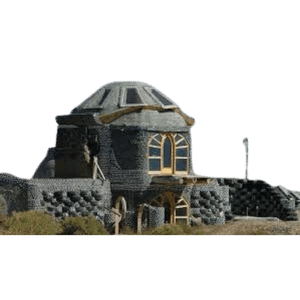
Earthship
An earthship is a sustainable house built with natural and recycled materials, often found in desert areas. These types of houses are designed to be self-sufficient, using solar energy, rainwater collection, and natural insulation for off-grid living. Earthships reflect the growing trend of eco-friendly, sustainable architecture.

Wigwam
A wigwam is a domed shelter made from wooden frames and covered with bark or hides, historically used by Native American tribes. These dwellings are designed for easy assembly and are suitable for both cold and warm climates. Wigwams provide cultural and historical insight into indigenous housing.

Teepee (Tipi)
A teepee is a conical tent traditionally used by Native American Plains tribes. These portable structures are ideal for nomadic lifestyles, offering protection from the elements while being easy to transport and set up. Teepees are now recognized as symbols of Native American culture.

Oast House
An oast house is a structure originally used to dry hops for brewing, commonly found in England. These homes are known for their distinctive conical roofs and are often converted into residential spaces or tourist accommodations, providing a unique architectural style with historical significance.
Houses Names by Geography with Pictures

Mobility Types of Houses

Mobile Home
A mobile home is a prefabricated house that can be easily transported. These homes are popular for their affordability and flexibility, allowing homeowners the ability to move as needed.

Floating Home
A floating home is a stationary house built on water. These types of homes provide a unique experience in water-rich areas like Amsterdam, combining stability and freedom.

Houseboat
A houseboat is a mobile home designed for water living. These types of houses are fully functional for daily life and can move between locations, perfect for those seeking a nomadic lifestyle.

Tentsile (Portable Treehouse)
A tentsile is a lightweight, portable treehouse suspended between trees. These homes are ideal for eco-friendly camping in remote environments.

Yurt
A yurt is a portable, circular tent with a wooden frame, commonly used by nomads. This type of house is easy to transport, making them ideal for mobile living in rural areas.

Ger (Mongolian Yurt)
A ger is a traditional Mongolian circular dwelling, similar to a yurt, designed for portability and harsh weather, perfect for nomadic lifestyles.

Shipping Container House
A shipping container house is built from recycled containers, offering affordable and eco-friendly housing. These homes can be transported or expanded easily.

Tiny House
A tiny house is a small, compact home, often built on wheels. These homes are popular for minimalist living and mobility, suited for a nomadic lifestyle.
Houses Names by Mobility with Pictures

Types of Houses with Different Sizes

Tiny House
A tiny house is typically under 400 square feet, offering minimal living space with maximum efficiency. These homes are designed for those who prioritize simplicity and sustainability, making them a popular choice in the minimalist movement.

Cape Cod House
A Cape Cod house is a small, one-story home with a steep roof and central chimney. These types of houses originated in New England and are known for their compact yet functional design, often used as family homes in suburban areas.

Silo House
A silo house is a cylindrical structure repurposed from agricultural silos. These types of houses offer a unique and compact living space, often found in rural settings, known for their distinctive shape and rustic charm.

Lustron House
A lustron house is a prefabricated, steel-paneled home that was popular in the post-World War II era. These homes are small and efficient, offering a low-maintenance option for families in suburban and urban settings.
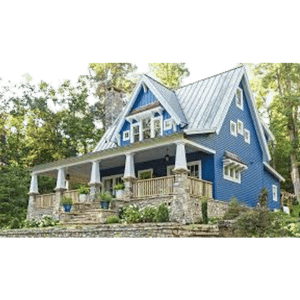
Craftsman House
A craftsman house is typically medium-sized, featuring hand-crafted wood details, wide porches, and low-pitched roofs. These homes offer a cozy, detailed design that is both functional and aesthetically pleasing, making them ideal for suburban families.
Houses Names by Size with Pictures

Sustainability Types of Houses

Earthship
An earthship is a sustainable home built with natural and recycled materials, designed for off-grid living. These eco-friendly dwellings are self-sufficient, utilizing solar energy, rainwater harvesting, and natural insulation, making them ideal for eco-conscious homeowners. Earthships are popular in desert areas due to their ability to maintain temperature control without external power sources.

House with Green Roof
A house with a green roof features a rooftop garden that provides insulation and absorbs rainwater. These types of houses are known for their eco-friendly design, reducing the carbon footprint while offering a unique aesthetic that blends with the natural environment. Green roofs also contribute to urban biodiversity by providing habitats for plants and animals.

Shipping Container House
A shipping container house is a sustainable home built from recycled containers, offering an affordable and eco-friendly housing option. These modular structures are easily expandable and relocatable, providing flexibility for homeowners while reducing construction waste. Shipping container homes are gaining popularity among those looking for innovative, cost-effective, and environmentally responsible living solutions.

Dome House
A dome house is a spherical home designed for energy efficiency and sustainability. These unique dwellings distribute heat and airflow evenly, reducing energy consumption. Dome houses are a great option for eco-friendly homeowners seeking an innovative, durable living space that integrates well with natural surroundings. The design is both futuristic and functional.

Prefabricated House (Prefab)
A prefabricated house is constructed off-site using sustainable materials and then transported to its final location. These eco-conscious homes are cost-effective and environmentally friendly, offering a quick and sustainable solution to modern housing needs. Prefab houses have become increasingly popular for their ability to reduce construction waste and energy usage during the building process.
Houses by Sustainability with Pictures

Ownership

Co-op (Cooperative)
A co-op is a type of housing where residents collectively own the building and make decisions together. These types of houses emphasize community living and shared responsibility, making them popular in urban areas with a focus on cooperative ownership.

Apartment
An apartment is a single living unit within a larger building, typically rented rather than owned. These types of houses are popular in densely populated areas, offering a convenient and affordable housing option for individuals and small families.

Prefabricated House (Prefab)
A prefabricated house is constructed off-site and transported to the final location. These types of houses can be either rented or owned, providing a flexible and cost-effective housing solution for those seeking quick and affordable homeownership.
Era/Architectural Movement Types of Houses

Colonial House
A colonial house is a symmetrical two-story home with evenly spaced windows, originating in the 1600s. These types of houses are recognized for their traditional, formal design, often featuring a central entrance and balanced façade. Commonly found in suburban areas, colonial homes reflect the architectural influences of early American settlers and remain popular for their classic appeal and spacious layouts.

Colonial Saltbox House
A colonial saltbox house is a two-story wooden home with a long, sloping roof that extends down the back, creating a unique asymmetrical profile. These historic homes, typical of early American architecture, are valued for their simplicity and practicality. Saltbox houses are especially common in New England, where their design helped withstand harsh winters and conserve building materials.

Tudor House
A Tudor house is characterized by its steep gabled roofs and decorative half-timbering, reflecting its English origins. These homes often feature tall, narrow windows, brickwork, and wood accents that give them a distinct, storybook appearance. Tudor houses are commonly found in suburban areas, offering a blend of medieval charm and modern functionality. The intricate detailing and sturdy construction of these homes make them a popular choice for those seeking a historical aesthetic.
Houses Names by Era with Pictures

Types of Houses Infographics
FAQs
Here are short descriptions of different house types:
1. Detached: A standalone house with lots of privacy.
2. Semi-Detached: Two houses joined by one wall.
3. Townhouse: Houses in a row, sharing walls.
4. Apartment: A home in a multi-unit building.
5. Cottage: Small, cozy, and in the countryside.
6. Bungalow: A one-story house.
7. Villa: A luxurious house with gardens or a pool.
8. Duplex: A house split into two homes.
9. Mobile Home: A movable house.
10. Mansion: A large, fancy home.
11. Tiny House: A very small, simple home.
12. Farmhouse: A rural home on a farm.
13. Treehouse: Built in or around a tree.
14. Earth House: Built into the ground for insulation.
15. Floating House: A home on water.
16. Terraced House: Houses in a connected row.
Here are the most common house types:
1. Detached House
2. Semi-Detached House
3. Townhouse
4. Apartment/Flat
5. Bungalow
6. Cottage
7. Duplex
8. Terraced House
A 5-story house is a building with five levels or floors stacked on top of one another. Each story typically includes living spaces like rooms, kitchens, or bathrooms. These houses are often found in cities where land is limited, allowing for vertical living and more space within a smaller footprint.
The four basic house designs are:
1. Ranch: A single-story house with a simple, open layout.
2. Colonial: A symmetrical, multi-story house with a traditional style.
3. Contemporary: A modern house with clean lines and large windows.
4. Cottage: A small, cozy house with a charming and rustic feel.
The four main types of houses are:
1. Detached House: A standalone home with no shared walls.
2. Semi-Detached House: Two homes joined by one wall.
3. Townhouse: A row of connected homes sharing walls on both sides.
4. Apartment: A unit in a multi-story building, often in cities.
You May Also Like




